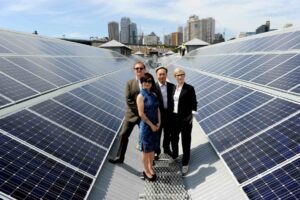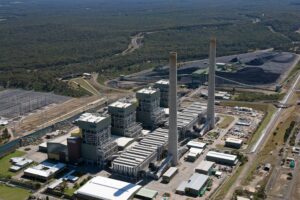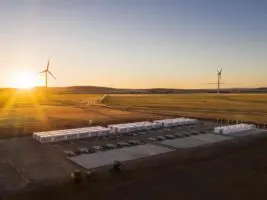The New South Wales electricity grid is not well prepared for a prolonged black-out or a “system black” event, a new report has warned – despite having the highest concentration of coal-fired “baseload” power generation of any grid in Australia, and even the world.
The report, tabled by the Energy Security Taskforce on Tuesday, comes as Australia’s electricity networks head into another summer of high demand and almost inevitable heatwave conditions.
One of the major threats to the reliable supply of coal fired power generation, according to the report, and one of the most likely potential triggers of a major electricity outage over the coming months. Already, four coal units have tripped in the last week as the first heatwave hit the eastern states.
The report was commissioned by the NSW government to examine risks to the resilience of the state’s electricity system after it came under pressure on in February during a late summer heatwave, when four major coal and gas units failed in the heat.
The incident, on February 10, 2017, saw the state narrowly escape a major, grid-wide outage when the capacity of available large thermal generators fell by about 805MW during the peak demand period, largely due to high ambient temperatures and cooling pond temperature limits.
At the same time, the Colongra gas generator failed to start when requested by AEMO, due to low pressure in the gas supply lines, as the units had run on gas earlier in the day.
Not a whole lot has changed in the state’s generation mix since then, but the threat of heatwaves and other extreme weather events is increasing in frequency and severity.
According to the report, by 2030 heatwaves are projected to last an average of 1.5-3.5 more days over most regions in NSW apart from the coast and south-west. By 2070 the longest heatwave is projected to be 2-11 days longer on average.
“Risks from extreme weather are likely to continue to increase and test the resilience of the (NSW) system, the report says.
“Large coal thermal plant generally will not perform as well in extreme hot weather and can also have output limited by environmental constraints, for example, cooling pond temperature limits.
“As heatwaves are likely to run closer to each other, thermal generation plants may have to run at higher output for more days in a row than historically, with shorter periods in between to replenish fuel stockpiles and maintain plant if needed.”
And heat is not the only climate related threat.
The report notes that the NSW electricity system is also vulnerable to drought, which can reduce water available for coal plant operation and hydro generation – although a recent report noted that modern pumped hydro technology uses one-quarter the amount of water than coal.
“Water is both a fuel source for hydro power generation and critical to the operation of thermal plants,” the report says.
“This was seen during the 2007 drought where water for hydro generation was limited, as was water for cooling in thermal generation where both water quantity and quality can limit production.
“On 10 February 2017 NSW was highly reliant on hydro generation which contributed 2,619MW at the time of peak demand.”
To address these and other threats to the electricity NSW system, the report recommends that the state government, along with other governments on the NEM, watches the market closely to see that plans to diversify the generation mix are implemented, and to assure “that new generation with the right capabilities is coming online where and when it is needed.”
The Taskforce also observed that market players and ways of interacting with the market were becoming more diverse, particularly with large energy users taking more control over their energy costs and supplies, and new business models emerging to hedge businesses against energy costs and supply risks.
“In this environment of change, the government should ensure that it is well informed about emerging risks and well prepared to take steps if needed to support the market to work effectively,” the Taskforce recommends.
“It will be important for the government to use the levers within its control to support the market to operate, and avoid directly intervening, for example, by funding new generation capacity which may have the unintended consequence of discouraging private investment in the market.
“This period of transition creates opportunities for innovation to increase the future reliability and security of the electricity system,” the report continues, pointing to a number of areas where government can support innovation by removing regulatory barriers to the deployment of new technologies.
This included the development of microgrids, the report said, which had been deployed in some US states, following extreme weather events, to avoid large blackouts in the future.
“For both stand-alone microgrids and virtual power plants, there are new technologies and business models emerging relatively quickly that have the potential to support security and reliability of the system in NSW,” the report says.
“It is important that regulatory arrangements at all levels can keep pace with these new technologies and business models, and not present barriers to uptake.”










